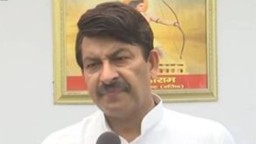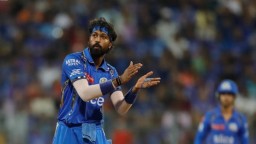Latest News
NaMo LEADING WITH VISION ‘BEYOND THE OBVIOUS’

PM Modi ji’s continued focus on the North East has reaped rich dividends - Dr Jitendra Singh, Union Minister / Himanta Biswa Sarma, Assam CM / Tapir Gao, MP, Arunachal Pradesh / Kiren Rijiju, Union Minister
Before 2014, most people in mainland India had very cursory knowledge and incorrect information about the people of North East, their life and culture. They had vague ideas and not many knew even the location of the states of the North East and the varied people who belonged to those states. When Modi ji came to power, the biggest thing he did was to prioritise the North East. He brought the cultural and developmental issues of this part of the country into the mainstream narrative and gave it due focus and importance which was missing in the years before. Since becoming the PM, he visited the North East close to 65 times, thereby himself leading the transformation of the region from the front. No PM has ever taken up so many trips to this region to have a first-hand experience of the problems and possibilities here. He then gave the slogan, ‘transformation through transportation’. Remote areas like Tawang were brought under the railway mapping. Rajdhani trains connected the capital cities of the North East. Roads were built. Metre gauge tracks were rapidly converted into broad gauge sections and single lines were made double for faster and more efficient movement of goods and passengers across the North East and beyond. This improved the people-to-people connect, with more awareness in mainland India about the people and cultures of the North East. Modi ji’s look east policy has seen thousands of crores of rupees being pumped in for the development of the North East. Not just road and rail but air and digital communication have also got a boost due to this. Areas of Nagaland, Manipur, Meghalaya, Mizoram, which were always outside the mainstream attention, are now having greater presence and involvement in the nation’s development as connectivity has brought them near. The whole purpose and thrust of the Modi government’s development model is to bring on par all those areas and peoples who have fallen behind in India’s growth story through years of neglect or inequitable distribution of resources. Modi ji had given a very nice analogy that if one arm of mother India is weak, there can’t be complete development. Today the government’s North-East development model is being replicated across. Modi ji is very sensitive about the North-East. Whenever there is any cabinet meeting related to development, the first thing Modi ji asks is what is happening in the NorthEast. He always says, for me the North-East is not just about the piece of land we have or the demographic dividends it brings. It is a piece of my heart!
Modi’s outlook keeps his leadership ahead - Kamlesh Yagnik, Surat
I will tell you an instance of Modi ji’s ‘beyond the obvious’ vision. There was a proposal of connecting all parts of Surat city with a comprehensive network of CCTV cameras. Modi ji, as the state CM, said he wanted an integrated CCTV coverage and command system for the security of the citizens. He also said that he wanted citizens’ participation in the project and to ensure their involvement with the police commissioner in its implementation, so that they would also know all the nitty-gritty of the system. He met the city’s businessmen and other related individuals who could be a part of the project and mooted the idea. Soon it was implemented accordingly and the city was covered under CCTV umbrella coverage to keep track of its every nook and corner. Modi ji was to inaugurate the facility. At the launch event, even as people were lauding the efforts of the police chief in making it a success, Modi ji said in his speech that though the credit for the project’s success goes to the police commissioner and the people involved, the Surat municipal commissioner too should have complete tracking access to the CCTV coverage. The civic official was surprised because CCTV is usually related to law and order which the police track 24x7 and it doesn’t normally have much to do with the municipal chief of a city. Then Modi ji said the CCTV system was not only for the safety of the citizens but could also be used for the cleanliness of the city. The municipal authorities would be able to keep a constant watch on the status of cleanliness from the control room and act accordingly whenever or wherever required. He thus found two uses of the same CCTV system which is usually associated only with security. Such is his ‘beyond the obvious’ outlook that keeps him and his leadership ahead of others.
India has emerged as first responder in disaster relief - Vikas Swaroop, Former Indian Diplomat
A big change in the way the world is looking up to India is in the areas of humanitarian assistance and disaster relief, where India has emerged as a first responder. Whenever our region has been hit by a crisis, India has responded with speed and solidarity. Take the example of Nepal. In 2015, when the country was rattled by a major earthquake that killed over 9,000 people, India responded in less than six hours. Our Indian Air Force flew in the National Disaster Response Force (NDRF) team and took over the relief work. It landed 32 flights over the next few days with over 520 tonnes of relief material and more than 50 army, engineering and medical and other rescue operation teams. Similarly, the Indian Navy was the first to arrive in the Maldives with fresh potable water to serve over 1,50,000 citizens of the island nation in December 2015 when they were hit by a severe water crisis. When a cyclone hit the region in 2017 and caused destruction in Sri Lanka and Bangladesh with flooding, India was again the first to respond. During times of conflict, we have not only been efficient and fast in flying out our citizens but also foreigners. For instance during such a conflict in Lebanon in 2015, when 5,400 people were evacuated, there were over 900 foreign nationals among them. The Vande Bharat mission after the pandemic is said to be one of the largest civil evacuation missions by any country during peacetime. Over 1.8 million Indians were evacuated in over 15 phases. India also evacuated 20,000 nationals, mostly students, in over 90 flights, during the Russian invasion of Ukraine under the Mission Ganga programme. Also, a whopping $3.8 bn financial package was extended to Sri Lanka to help it tide over its grave economic crisis. Such contributions help project India’s soft power and also her growing sphere of influence and capacity to shape events.
COMPILED AND EDITED BY SHASHIKANT SHARMA






.png)
.png)
.png)
.png)
.png)
.png)






.png)


